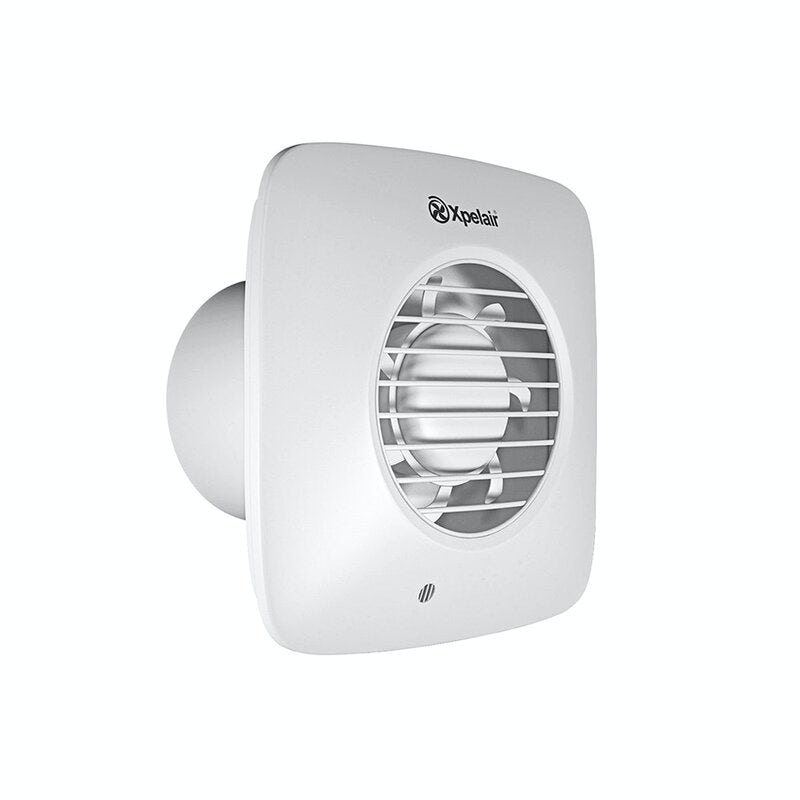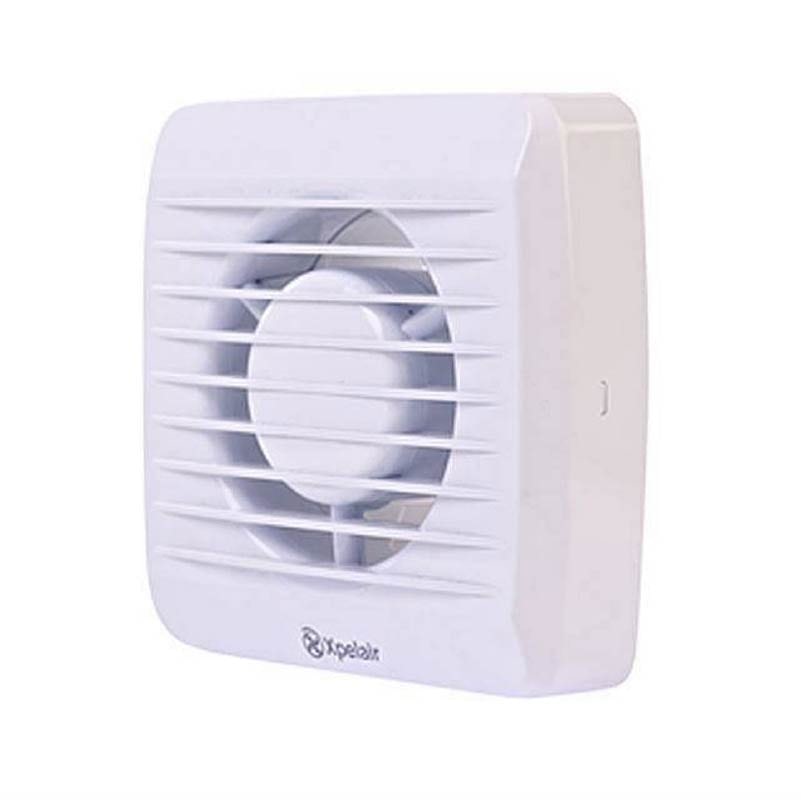Find out everything you need to know about bathroom ventilation, extractors fans and more, with this expert guide.
When we use the bathroom on a daily basis, even though we hear the extractor fan whirring into action, it happens so often that we barely even notice the important job it is performing. Ventilation in the bathroom is needed in every home—especially if you do not have a window to open and release the built up condensation.
If you are renovating your bathroom, or simply replacing an existing extractor fan, our complete guide to bathroom ventilation will tell you everything you need to know to ensure you choose the right product and install it without any hassle.
Simply click on any of the links below to jump to a relevant section.
- Do I have to install an extractor fan?
- Why are extractor fans important?
- What types of extractor fan are available?
- Choosing the right extractor fan
- Narrowing down your options
- How much do extractor fans cost?
- How to clean a bathroom extractor fan
- Keep your bathroom and home clean and healthy
Do I have to install an extractor fan?
While the law doesn’t state you must install an extractor fan in your bathroom, it is illegal not to have a source of ventilation inside. This will depend on the structural make-up of your home, but if there is no openable window in place, then an extractor fan must be installed. This is described in more detail in Building Regulations Document F, which lays out the full requirements for ventilation in bathrooms.
While all bathrooms in the UK must have some form of ventilation, the type used will depend on the room and features inside. For example, new builds with both a bath and shower must have an extractor fan installed due to the lower levels of natural ventilation modern properties provide.
Bathrooms with a toilet can rely on an openable window as the source of ventilation. Building regulations dictate requirements as 15 litres per second/54m3 per hour. This measures how quickly existing air is replaced with new air. If you are unsure if the product you want to buy meets this standard, always be sure to check, as it should be stated on the packaging.
Why are extractor fans important?
Water vapour equating to as much as 10 litres can be released inside your home on a daily basis, which, unless extracted, can reduce air quality and lead to the formation of mould and damp. While this can also occur in the kitchen (cooking, washing machines and kettles), the bathroom is the room in every home that produces the most due to the large amounts of water produced by baths and showers.
Introducing fresh air will combat and reduce condensation and humidity levels, making for a healthier living space. Aside from the potential of mould and damp being formed, a poorly ventilated bathroom will also reduce the lifespan of plaster, paint and some pieces of furniture. It can also be the cause of a number of health issues, such as asthma and rhinitis, along with skin infections and eye irritation.
The Xpelair simply silent bathroom extractor fan is one of our most popular forms of bathroom ventilation
What types of extractor fan are available?
When searching for a new extractor fan it is helpful to understand the differences so you can purchase a product more suited to your needs. The main types of extractor fans are:
Centrifugal
If your bathroom is situated over 1.5 metres away from an external wall, a centrifugal fan is the best choice. This is because they are mechanically designed to be more powerful and shift air over longer distances which can make them a little noisier as a result. In many cases, they are fitted into the ceiling.
Axial
Bathrooms that are situated within 1.5 metres of an external wall will typically have an axial extractor fan installed. These are not as powerful as the air has to travel a shorter distance and are also quieter as a result.
Inline
While most bathrooms are constructed to fit into the above 2 categories, sometimes that is not the case. An inline extractor fan can move the air over even longer distances of at least 40 metres for bathrooms that are further away from an external wall.
Bathroom window
The simplest option is to open the bathroom window if you have one in place. If you are renovating and thinking of installing a window, double or triple-glazed tilt and turn opens are usually the best, as they swing outwards to maximise the amount of air that can enter the space.
The further away the bathroom is positioned from an external wall, the longer the “duct run” will have to be. The duct run is the hose that shifts the air from inside the bathroom toward the fan. Newly built homes may also feature ventilation around the entire property, which will manage air flow in every room. Some even come with motion detectors that will adjust the movement of air based on your activities during the day.
Choosing the right extractor fan
The first thing to consider is size. In terms of the actual impeller (which takes the air out of the room), extractor fans are usually either sized 100mm or 150mm.
You will have to do some measurements to determine which one is best for your bathroom. An extraction rate of at least 1 cubic centimetre per square foot is ideal for bathrooms that are 100 square feet or less.
This is relatively easy to work out, as a bathroom that is 65 metres square requires 54m3/hr fan to offer high performance levels. Always try to get a fan that is a little bit more powerful to ensure it can do the required job—with many products also coming with optional speed and extraction settings.
The Xpelair bathroom timer fan is a great low-cost option, especially if you’re working to a tight budget
Narrowing down your options
Now you know the types and sizes available, there are some other features to consider before making the final decision.
As we mentioned above, some extractor fans are noisier than others, so you may want to opt for a no-noise product that uses ball bearing motors to run silently in the background. These may be a good option for smaller homes or shared properties, where the noise of an extractor fan could be heard in other rooms.
A further consideration to take into account is the positioning of the fan. You will want to install them as close to the source of air moisture as possible, usually above the bath or shower, and be sure to choose a product with the correct IP rating (usually IPX4 or above is enough but always check).
There are also a growing number of extractor fans that feature additional technology such as humidity sensors, cords and timers.
Extractor fans with humidity sensors will automatically switch on when they detect moisture in the air, doing all the hard work for you.
Products with timers will extract air for set number of minutes to remove the moisture, also reducing energy bills and carbon output by working for a fixed period of time. Alternatively, you can remain in control and purchase a product that comes with a cord that allows you to turn the extractor fan on and off whenever you need.
How much do extractor fans cost?
Prices of extractor fans will vary depending on the type of product you purchase—the more features it has, the higher the cost will be. In most cases you can expect to pay anywhere between £20 and £50 for a reliable fan to perform consistently well in your bathroom.
Unless you are qualified to do so, you will also have to factor in the cost of paying for an electrician to install it. They will either charge a fixed rate or by the hour, so be aware of the full cost involved (including VAT charges) before hiring a tradesperson to do this for you.
The Xpelair airline shower fan kit extracts moisture right at the point of humidity for a steam-free bathroom
Want to know whether bathroom extractor fans are expensive to run? Read our in-depth article.
How to clean a bathroom extractor fan
Unfortunately, bathroom fans won’t keep themselves clean and will need you to carry out occasional maintenance tasks to keep them in good working order. The process is straightforward if you follow the following steps:
Turn off the electricity
Before removing the fan, you need to turn off the power using the circuit breaker or mains switch.
Remove the fan and soak
Usually the extractor fan cover can easily unclip and slide out of position, although some do feature spring clips. You can then place the fan in a bucket or sink filled with warm soapy water to soak.
Dust the fan unit
Use a duster to clear away the build-up of dirt inside the fan blades. Start from behind the back of the blades if possible, before dusting the rest and slowly moving forward to avoid pushing the dirt back to areas already cleaned.
Clean the unit
You can then use a cloth and warm soapy water to clean any deep dirt marks that may have developed, making sure the power remains off while doing so. Rinse out the cloth and clean away the soap residue with a damp cloth before drying the area with kitchen towels.
Dry everything out
Let the fan cover and fan dry out completely before putting these back into place. As long as you have dried out the internal part of the unit thoroughly, you can switch the power on before doing this.
Keep your bathroom and home clean and healthy
Taking all of the above into account, take a look at our fantastic range of extractor fans. We have something to suit every home, with a variety of sizes, speeds and features available to ventilate your home and reduce the chances of mould and damp forming.







